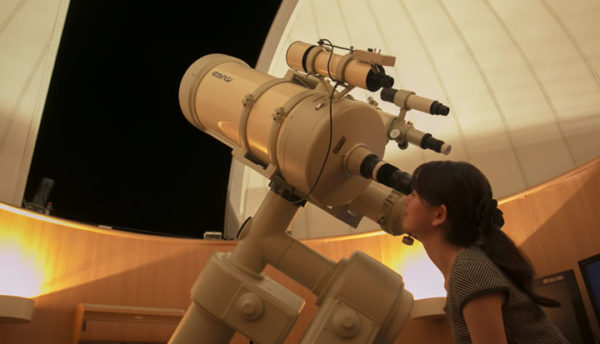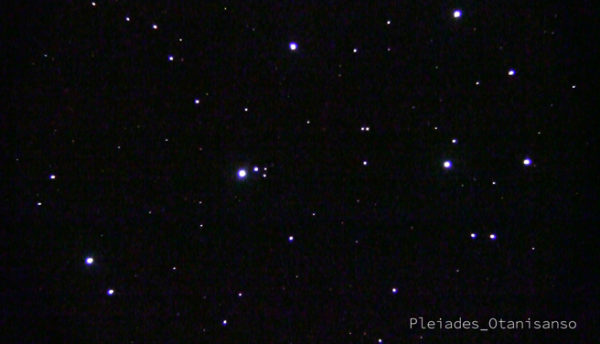- Astronomical Observatory
- 2019/03/26
[February in the Observatory] Come see the moon as it draws close to the earth, as well as the star Betelgeuse and the Pleiades, and other winter constellations
Observe the moon as it draws closer to the earth, and the star Betelgeuse glowing red like the sun.
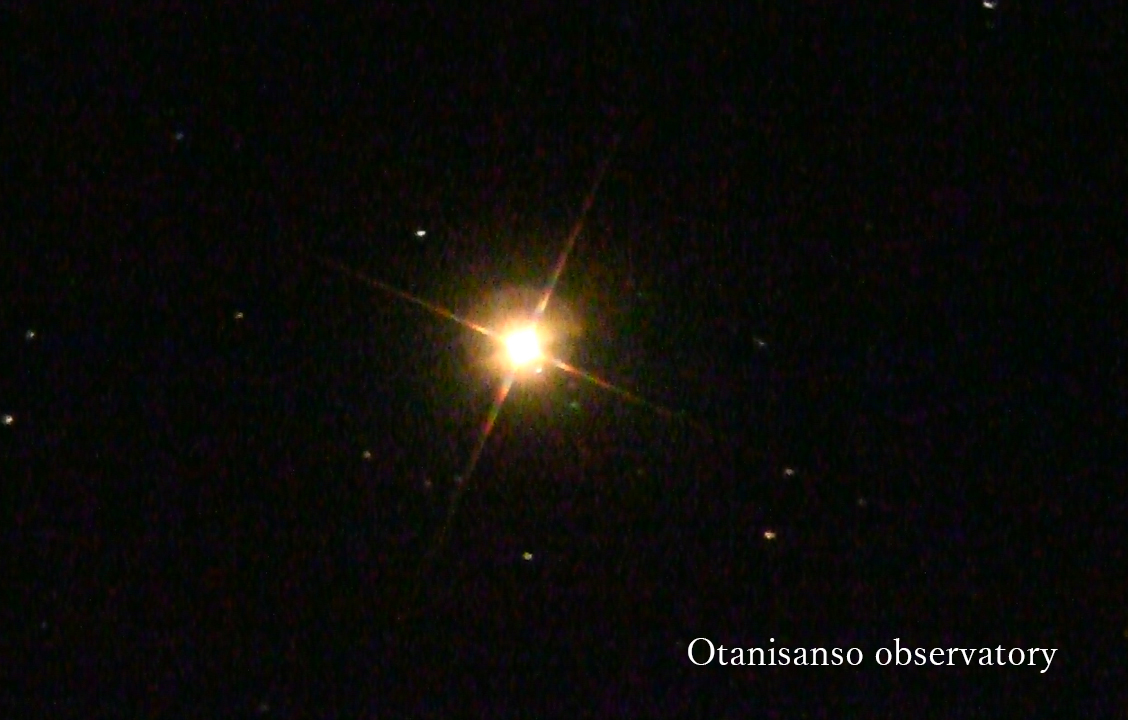
See the moon through our telescope until February 22nd, as it comes extremely close to the earth
Greetings from the Otani Sanso Astronomical Observatory Dome. The following information on Nagato’s starry skies is an introduction to what can be observed here in February, 2019. Observations this month will center around the moon, which will draw close to the earth during the first half of February. Though we won’t be able to see the moon after the 23rd, we will be able to observe winter constellations and stars surrounding the Orion constellation, as well as the popular Pleiades star cluster. Fixed stars within the Orion nebula like Sirius, Betelgeuse, and the Messier 41 open cluster are a particular treat we can view shimmering in the chilly winter skies. Please bring a coat and come take a look at the winter stars directly through the telescope. (Photograph was taken at Otani Sanso Astronomical Observatory Dome: Betelgeuse above, moon below)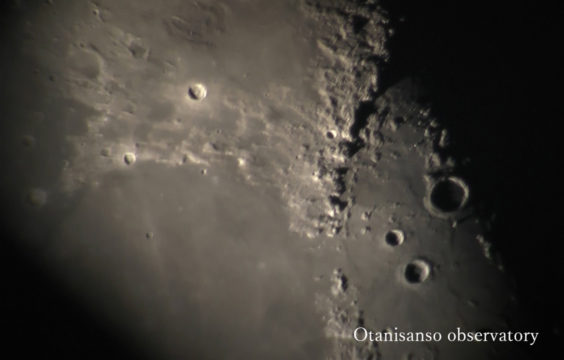
Stellar Objects Expected to be Visible in February
- February 8 (Fri) – 14 (Thu) ・The moon, observations around the constellation of Orion (Orion Nebula, Sirius, Betelgeuse, and the Messier 41 open cluster)
- February 15 (Fri) – 22 (Fri) ・The moon will be the main object for observation
- February 23 (Sat) – 25 (Mon) ・Observations around the constellation of Orion (Orion Nebula, Sirius, Betelgeuse, and the Messier 41 open cluster)
Making a Reservation at the Astronomical Observatory
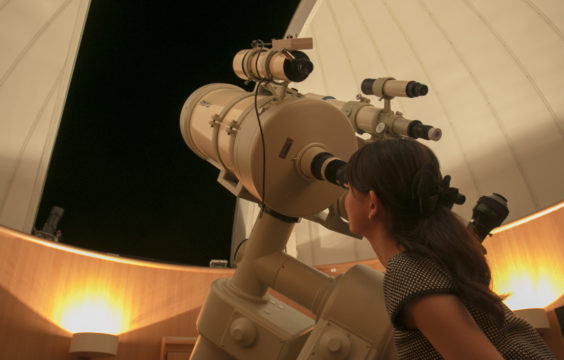
Details
- Observatory Hours… 7:30 p.m. – 10:10 p.m.
- Closed on… Every Tuesday
- Location… Otani Sanso Roof (Just beside the gallery on the 8th floor)
- Price… Free for overnight guests (Viewings available to those who reserve first)
- Using the Observatory… Viewings are available to those who reserve first (12 seats per viewing)
Observation Times
- 7:30 p.m., 7:50 p.m.
- 8:10 p.m., 8:30 p.m., 8:50 p.m.
- 9:10 p.m., 9:30 p.m., 9:50 p.m.
How to Make a Reservation
Please inform us of your desired reservation time from the times listed above (Please tell us via telephone, or write it in the “requests” field) *You may not be able to participate in a viewing if a time slot is fully booked, or due to weather conditions. *Should you be unable to participate in a viewing due to weather conditions, you will be able to see a video from a past viewing.See all information from the Astronomical Observatory
■Frequently Asked Questions 「"Why is there an astronomical observatory on the roof of Otani Sanso?"」 The president of Otani Sanso, a great fan of the poems of Nagato/Senzaki-born Kaneko Misuzu, built the observatory out of a desire to "share the beautiful stars of Nagato with our guests, too." In fact, it was through a chance meeting via the Kaneko Misuzu Exchange Association that the president met with Dr. Haoru Saji, who greatly affected the president with the beauty of the stars he could see from the observatory at Tamagawa University even during the daytime. "There's much more than your eyes can see," Dr. Saji told him. "Let's take a look at the daytime stars." When you look up at the starry skies of Nagato, here, surrounded by nature, we hope you'll make memories to take home with you that you can look back on fondly.
Night Sky Trivia
The Speed of Light
- Light moves at a speed of approximately 300,000 km per second (7.5 revolutions around the Earth), and can cover 9.46 trillion km in a year.
- It takes light from the sun 8 minutes and 19 seconds to reach the earth.
- It takes 8 minutes and 19 seconds for light from the sun to reach the Earth.
Distances in Space
- Because space is so vast, we use “light years” and “astronomical units (AU)” to describe the distances between stars.
- 1 light year = the amount of distance light can travel in one year (9.5 trillion km)
- 1 astronomical unit = the distance between the sun and the Earth (approx. 150 million km)
Earth Time
- There are 24 hours in one day, but it takes 23 hours and 56 minutes for a rotation of the earth, leaving a margin of 4 minutes.
- The reason we have “leap years” is because the Earth’s orbital period around the sun is just shy of 365 Earth days.
- 1 rotation of the Earth (23 hours 56 minutes) = 400 m/sec
- 1 revolution of the Earth (365 days) = 30 km/sec
